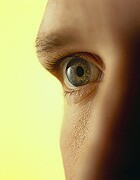
MONDAY, Aug. 2 (HealthDay News) — Factors that increase the risk of severe myopia (nearsightedness) and related vision loss have now been discovered by researchers, and the findings may lead to improved screening and treatment of people with the eye disorder.
Japanese researchers followed 429 patients with severe myopia for an average of 12 years and found that a condition called myopic maculopathy became significantly worse in 40 percent of the study participants.
Among these patients, the types and patterns of abnormalities that developed in the macula (the part of the eye that provides clear, detailed vision) influenced the extent to which vision was affected, the study authors explained in a news release from the American Academy of Ophthalmology.
The study is the first to specifically describe the association between disease pattern and vision loss. This knowledge could help eye specialists identify which patients require the closest monitoring, and help offer them the most appropriate treatments, the researchers noted.
“Our findings suggest that a patient’s age, degree of nearsightedness, eye (axial) length and a specific abnormal bulging of the back surface of the eye (a posterior staphyloma) may be important factors that affect the severity of myopic maculopathy,” noted Dr. Kyoko Ohno-Matsui, of the Tokyo Medical and Dental University, and colleagues. “Also, our results show that in eyes that are likely to progress to serious disease, the first observable sign may be a tessellated fundus (a specific abnormality in the macula).”
More information
The U.S. National Eye Institute has more about myopia and other refractive errors.

